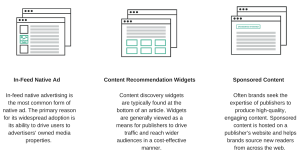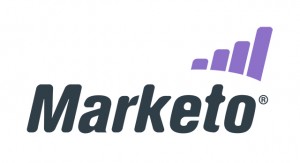
How to write content that is both outside-In and authentic to your brand
In my last post, I promised several follow-up posts delving deeper into the three insights. I still want to do that, but not this time. This post is about a central theme of all my work, including my latest book, which I co-authored with Mike Moran—how to be authentic and user-centric at the same time.
My primary advice for web writers, content strategists, and marketers is to write for your audience. This means learning their information needs and using that data as the basis of what content you should write and how you present it. That’s the essence of outside-in marketing.
The strongest objection I get from writers is that they lose their voice and unique creative contribution if they focus on what the audience wants. Every creative writing class ever offered starts with advice about being true to yourself, delving deep into your authentic identity, and writing about what you’re passionate about. When you do this, according to the teachers, you are bound to be successful, because that authentic passion is attractive to readers.
There are two flaws to stock creative writing advice:
- Those who hold true to the advice are only successful through luck. Most of the literature collecting dust in libraries is never read because no one is looking for it. Unless you happen to get famous by some stroke of extreme luck, no one will ever read your authentic writing. This was true in print and is even more apparent on the web, where you only get found if your writing is relevant to someone’s information journey. If you want to get read by a lot of people, you have to learn what they are looking for. Fortunately, search engines give us this data (unlike card catalogues). So the web is a place where anyone can develop a loyal readership simply by learning what people need to know, and writing credible content that gives them that information in an elegant, coherent package.
- Initially, readers don’t care about your authentic identity. This is a harsh truth, but it is borne out by research. The most successful writers through history were the best at telling the story as clearly and simply as possible, and otherwise getting out of the way. Again, it was true in print and even more so on the web. On the web, readers don’t have the time and attention to even read stories much anymore. They look for the shortest presentation of the facts they can find.I was reminded of this by an excellent recent New York Times opinion by Adam Grant. The article synthesized dozens of studies which showed that authenticity often leads to less success than would be expected given the quality of work done. In the article, Grant showed that, in general, people don’t want you to reveal personal details about yourself until after you have already established credibility with them. Instead, the trait that led to more success is called self-monitoring, in which you learn what other people need and you adapt your presentation to that.
What’s true of interpersonal and office communications is also true of writing. You have to develop credibility with your audience by giving them what they need. Only after you do this for a while can you fold authentic personal details. In the article, Grant showed that the most successful people were able to be both helpful and authentic. But it almost always happened when they started by being helpful first, and slowly revealed their authentic selves.
Personal brand and corporate brand
When connecting with the audience, brands are not that different from individuals. At least the information patterns are the same, so it is helpful to think about how a brand should communicate with its audience in terms of the way individuals write for their audiences. They need to start by being helpful on and in audience language and only reveal the unique details of the brand when the audience is ready.
The most important unique details about a brand involve how it is differentiated against competitors. But if brands start with their differentiation, it is akin to revealing personal details about oneself before the audience is ready. There are three ways your audience might react when you lead with your differentiation:
- Nobody finds your branded content because there is no demand for the brand names. It is relatively easy to rank in Google for your brand names. But, unless you have a popular brand, very few will search for it.
- When they do find your branded content, few will understand it. When they don’t understand, they abandon your experience. Again, unless you have already established your brand in the hearts and minds of your audience, they won’t understand the brand name without first establishing the context. Setting the context involves explaining the problem the product or service solves in a brand-neutral way and conditioning the conversation towards the brand differentiators—again, much as you slowly reveal personal details about yourself to new colleagues.
- Those who find your brand and understand it are already bought in. This is a tiny slice of the whole audience, but the most important one. If someone is searching on your brand names and they understand your differentiators, chances are, they are ready to be contacted for a more one-on-one nurturing experience, either by sales or pre-sales.
Establishing your personal brand is a delicate balancing act between revealing too much and being too impersonal. The same is true for the brands you manage. In both kinds of branding, if you lead with empathy for the audience, establish trust by being helpful, and reveal your personal or product differentiators when your audience is ready, you will be more successful.
Business & Finance Articles on Business 2 Community(75)









